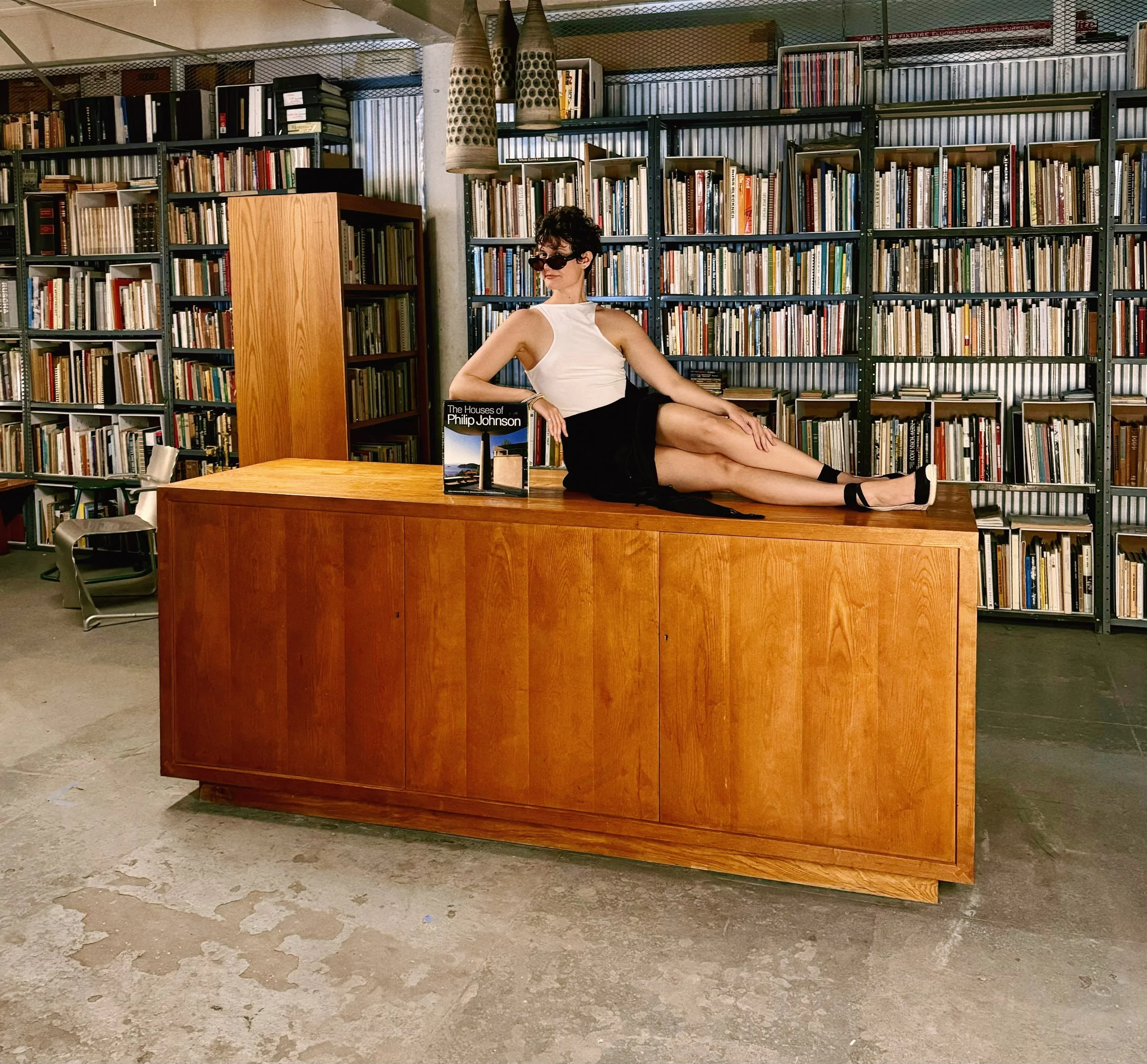Philip Johnson Kitchen Island from the Tremaine House Barn (1952)
Philip Johnson Kitchen Island from the Tremaine House Barn (1952)
$75,000
American, circa 1952
Free-standing kitchen island or prep station of solid oak designed by Philip Johnson circa 1952 for the Burton and Emily Hall Tremaine Barn in Madison, CT. Emily Hall Tremaine (1908-1987 ) was a socialite and avid art collector who along with her third husband Burton Tremaine amassed what was regarded as one of the finest private collections of 20th century art in the world. Their collection, which was displayed in their NYC apartment and their CT house, skewed toward post-WWII American art and included important and often quite early works by Mark Rothko, Andy Warhol, Jasper Johns, Alexander Calder, Roy Lichtenstein, Jackson Pollock, Claes Oldenburg, Robert Rauschenberg, John Chamberlain, Tom Wesselman, and Willem De Kooning, along with pieces by Picasso, Arp, Mondrian, Jean Tinguely, Robert Delaunay, and Diego Giacometti. The Tremaines enlisted their friend Philip Johnson to expand and reimagine their 1720’s Connecticut farmhouse for displaying art and entertaining. Between 1951 and 1955 Johnson added a pool, a glass pool house echoing his Glass House of 1949 two retaining walls, a custom wall sculpture, and he expanded the original living room with a new entry. Included too was a complete renovation of the 18th century barn, achieved by opening an entire side for a glass wall, also a la the Glass House. The Barn became a focal point of the Tremaine’s art collection and entertaining. The present island floated a few yards in front of a built-in wall unit with a sink. The monolithic aspect of the unornamented, well-proportioned and well-constructed island, related to a floating unit in the Glass House, was broken up by the framing along the paneled, two-door facade (the side facing into the room) and by a recessed plinth base. Visual diversity was provided by the figuring in the oak, especially on the top and the facade, and by butterfly keys at the edge joints, a detail borrowed from the craft productions of George Nakashima. The back of the island is divided into three sections—an open box in the center, probably to accommodate a beverage cooler—flanked by two open spaces with adjustable shelves. The island is visible in period photographs of the Barn taken during the Tremaine’s tenure (three are attached: one from page 73 of The Houses of Philip Johnson and two taken in 1984—day and night— that is on the Tremaine Collection website) and in photographs taken circa 2001 during a renovation after ownership changed hands. The island was removed at that point and was acquired by Weinberg Modern from the previous owner in 2016. This is the first time this one-off commission design has been offered in the market.
Condition
Very good vintage condition with only minor wear consistent with age and use, along with a few scuffs and chips.
Measurements
Height: 40 in.
Width/length: 96 in.
Depth: 30.25 in.
Specifications
Number of items: 1
Materials/techniques: Solid oak with butterfly keys




















